#80 in Vietnam
Bánh Đúc: Basic Information
Pronunciation
Alternative Name(s)
Dish Type
Course
Mealtime
Popular Bánh Đúc Variations

Bánh Đúc Bột Gạo

Bánh Đúc Lạc

Bánh Đúc Mặn
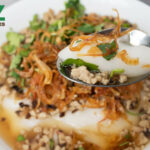
Bánh Đúc Nóng
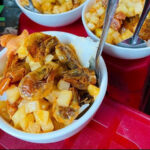
Bánh Đúc Tàu

Bánh Đúc Khoai Môn
Bánh Đúc: Ingredients and Preparation
Main Ingredients
Main Cooking Method
Preparation Process
Bánh Đúc: A Deep Dive
Cultural Significance
Taste
Texture
Aroma
Color
Serving Style
Serving Temperature
Accompaniment
Occasions
Seasons
Special Diets
Calories
Popularity
Popular Similar Dishes
- Bánh Da Lợn
- Bánh Bò
- Kuih
Popular Dining Area
Bánh đúc, literally “molded cake,” is a traditional Vietnamese cake made from flour.
People in Northern and Central Vietnam usually prepare it from rice flour, while its Southern Vietnamese variation is usually based on tapioca flour.
The making of bánh đúc involves creating a mixture of flour and limewater, cooking the dough over medium heat with constant stirring, pouring the hot mixture into a mold, and letting it cool down.
The solidified bánh đúc is next cut into cubes or pieces and served with various foods, creating many bánh đúc variations.
Bánh đúc can be mặn (savory) or chay (vegan) and play many roles, such as being a main dish, breakfast item, snack, and dessert.
Continue reading to explore the many versions of bánh đúc. Next, I will delve into the upsides and downsides of consuming bánh đúc.
Lastly, you will learn about frequently asked questions about bánh đúc as well as similar dishes.
Key Points
What Are Popular Bánh Đúc Variations?
Below are the 16 most common types of bánh đúc in Vietnam, which are classified based on the main ingredients and accompaniments.
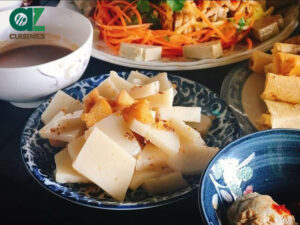
Bánh Đúc Bột Gạo
Plain bánh đúc made from rice flour and limewaterOriginal type of bánh đúc

Bánh Đúc Lạc
Made with shelled peanuts and shredded coconut meat (optional)Served with tương (Vietnamese fermented soybean paste)Popular in Northern Vietnam
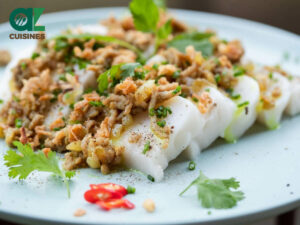
Bánh Đúc Mặn
Served with savory foods like scrambled eggs, tôm chấy (grilled ground shrimp), ground pork, fried onions, scallion oil, etc.Can be paired with Vietnamese dipping sauce and vegetables
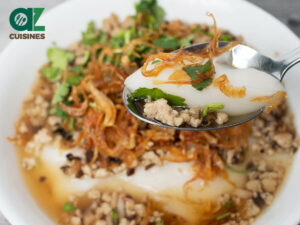
Bánh Đúc Nóng
Served hot with ground pork, fried onions, and vegetables
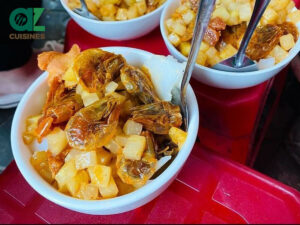
Bánh Đúc Tàu
Literally means “Chinese bánh đúc”A specialty of Haiphong cityMade from rice flour and tapioca flourServed as small cubes with ground pork, sautéd shrimp, daikon, carrots, wood ear mushrooms, Vietnamese fish sauce, etc.

Bánh Đúc Lá Dứa
Also known as bánh đúc gân (veined bánh đúc)Popular in Southern VietnamColored with pandan extractCan be made with rice flour or tapioca flourHas a soft texture and sweet flavorTypically served with sugar syrup
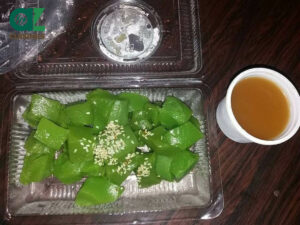
Bánh Đúc Nước Dừa
Made with coconut water and rice flour or tapioca flourCan have a green color due to pandan extractPopular in Southern VietnamHas a soft texture and sweet flavorTypically served with sugar syrup

Bánh Đúc Cốt Dừa
Made with coconut milk and rice flour or tapioca flourCan have a green color due to pandan extractPopular in Southern VietnamHas a soft texture and sweet flavorTypically served with sugar syrup

Bánh Đúc Khoai Môn
Made with taro
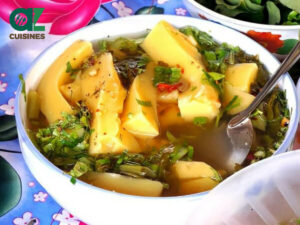
Bánh Đúc Ngô
Made with cornmealMainly popular in Northern Vietnam

Bánh Đúc Nộm
Served with nộm (Vietnamese-style salad), sesame seeds, and blanched bean sprouts
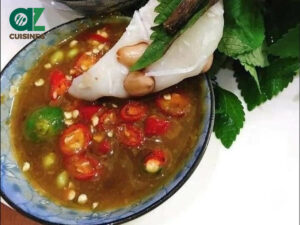
Bánh Đúc Chấm Tương
Served with soy sauce and chili peppers
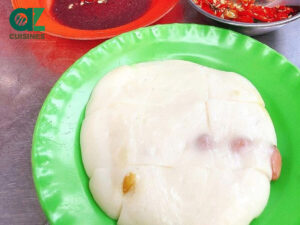
Bánh Đúc Mắm Tôm
Served with peanuts, fried onions, and shrimp paste

Bánh Đúc Riêu Cua
Served with bún riêu cua (Vietnamese noodle soup with rice vermicelli and a clear crab-based broth)
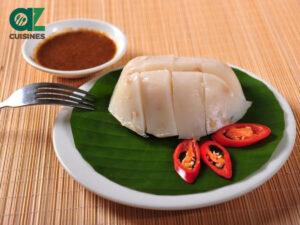
Bánh Đúc Hến
Made from the flour of a slightly red rice varietyServed with sautéd clam meat and clam broth
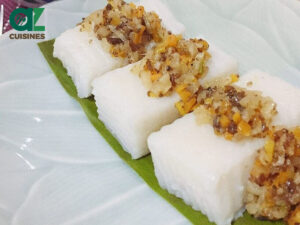
Bánh Đúc Chay
Vegan version of bánh đúcServed with plant-based ingredients like tofu and mushrooms
From the main ingredients of these bánh đúc variations, can you guess their advantages and disadvantages? Read on to see whether your speculation is correct!
Pros and Cons of Eating Bánh Đúc
Bánh đúc comes with the following positive and negative traits.
Pros
Cons
After presenting you with the strengths and weaknesses of bánh đúc, I will delve into other aspects of this Vietnamese cake in the FAQs section.




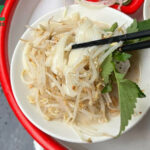

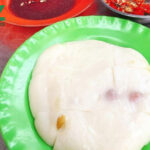
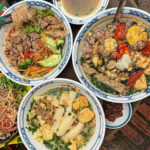
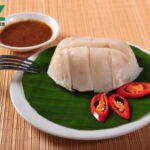
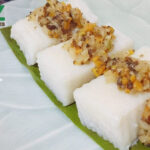
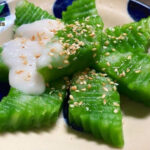
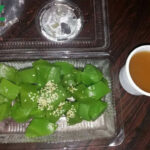




Truc Tran (Kris)
Senior Food Editor
Expertise
Home Cooking, Meal Planning, Recipe Development, Baking and Pastry, Food Editor, Cooking-video Maker, Vietnamese Food Evaluation Expert
Education
Truc Tran (Kris), an experienced food writer and editor, is great at exploring and describing global cuisines, from simple street food to fancy dining. In her writing, she skillfully mixes different flavors, cooking methods, and culinary traditions, showing the unique character of various cultures through their food and drinks. On azcuisines.com, Kris highlights her knowledge, especially in Asian cuisine and worldwide traditional dishes.